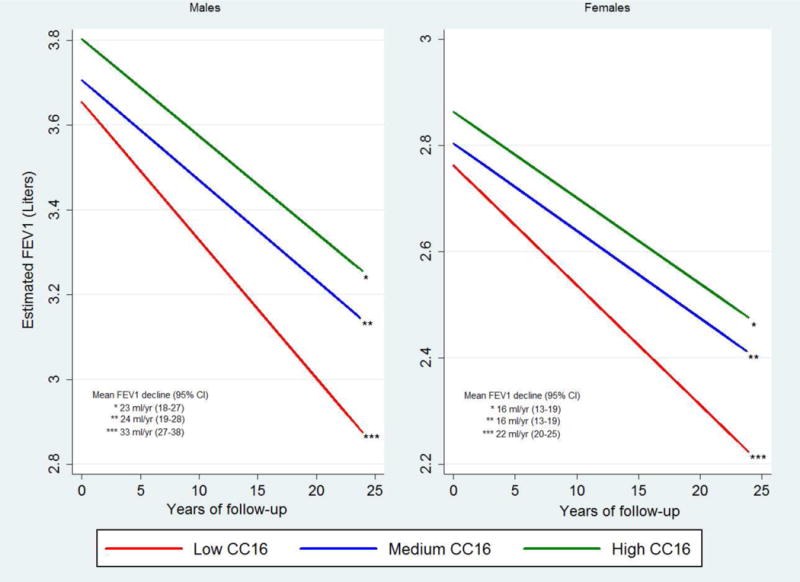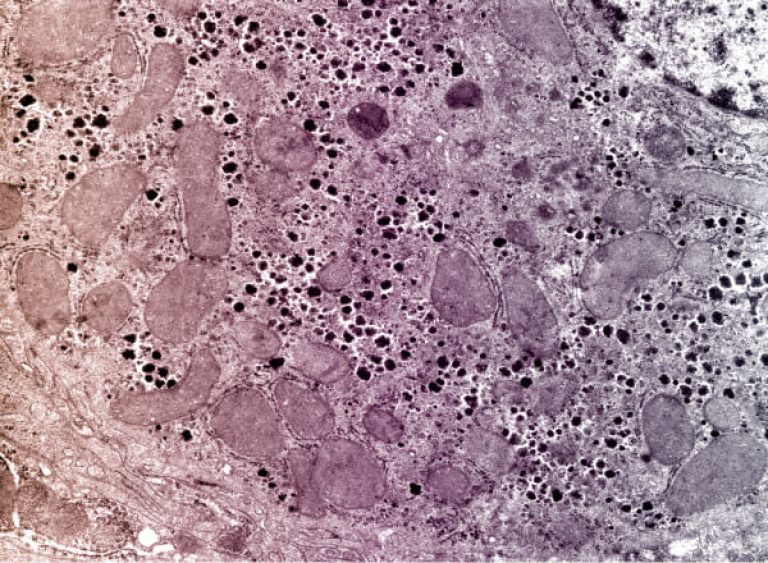Background
Low serum levels of the anti-inflammatory club cell secretory protein (CC16) have been associated with an accelerated FEV1 decline in COPD. Whether low circulating CC16 precedes lung function deficits and incidence of COPD in the general population is unknown.
Methods
We used longitudinal data from adults who were COPD-free at baseline from the population-based TESAOD (N=960, mean follow-up: 14yrs), ECRHS-Sp (N=514, 11yrs) and SAPALDIA (N=167, 8yrs) studies. CC16 was measured in serum from baseline and associated with subsequent FEV1 decline and incidence of airflow limitation. To evaluate early life CC16 effects, we also measured circulating CC16 in samples from ages 4-6yrs to predict subsequent lung function in childhood in the CRS (N=427), MAAS (N=481), and BAMSE (N=231) birth cohorts.
Findings
In adults – after adjustment for sex, age, height, smoking status/intensity, pack-years, asthma, and initial FEV1 levels – baseline CC16 was inversely associated with subsequent decline of FEV1 in TESAOD (p=0.0014), ECRHS-Sp (p=0.023), and a similar trend was found in SAPALDIA (p=0.052). Low CC16 at baseline also predicted an increased risk for incident stage 2 airflow limitation (i.e., FEV1/FVC<70% plus FEV1 % predicted < 80%) in TESAOD and ECRHS-Sp. In children, the lowest tertile of CC16 at age 4–6yrs was associated with subsequent FEV1 deficits up to age 16yrs (meta-analyzed estimate from adjusted models on birth cohorts: −68ml, p=0.0001). Results were confirmed among subjects who never smoked by age 16yrs (−71ml, p<0.0001).
Interpretation
Low serum CC16 is associated with subsequent slower growth and accelerated decline of lung function, and increased risk of developing stage 2 airflow limitation.




